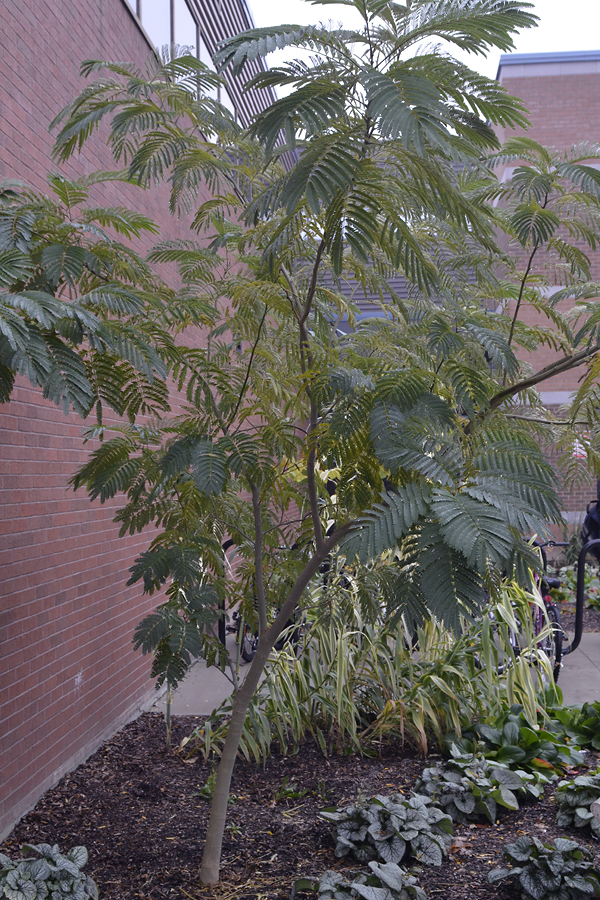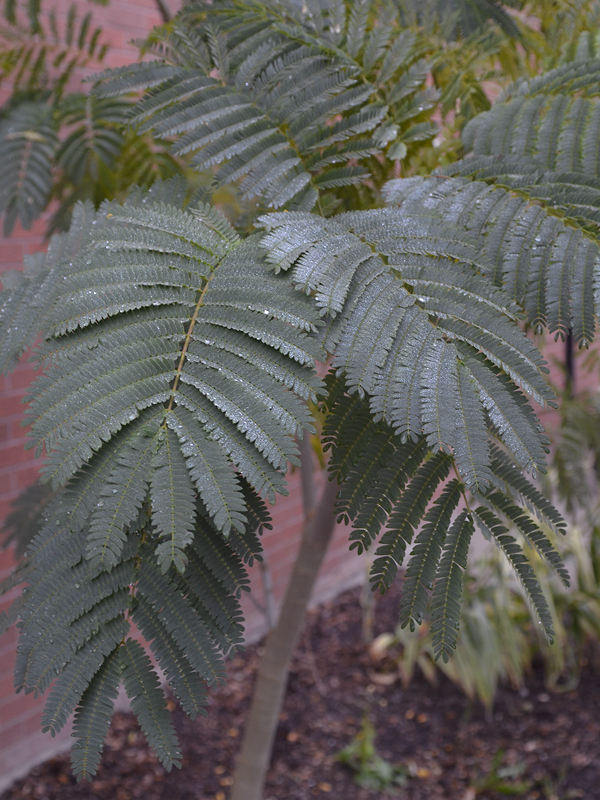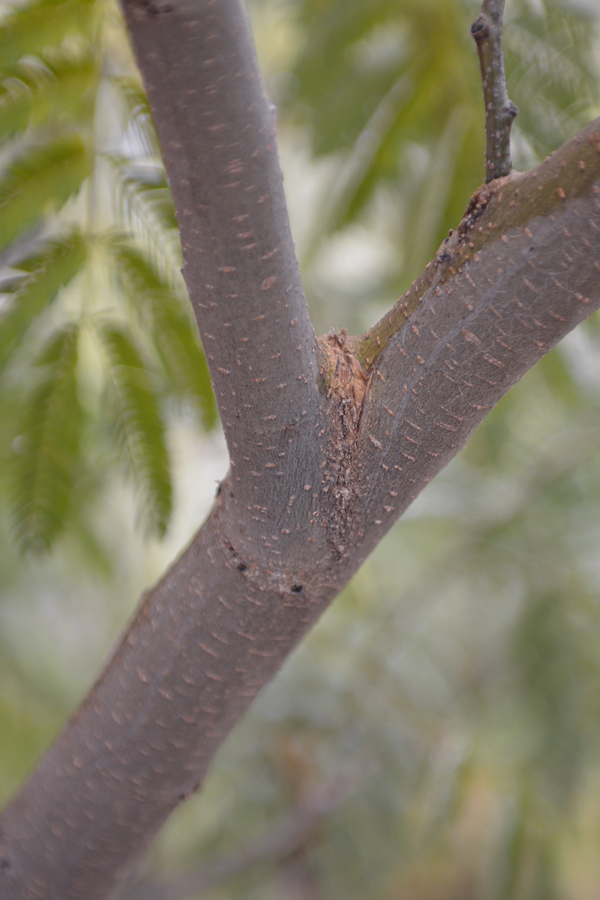Albizia julibrissin (Mimosa or Silk Tree)
Michael's Opinion
A problematic tree in the southern reaches of the continental United States since it is considered an invasive species but still for us northern gardeners a desirable plant and one that can add a soft tropical touch to those gardens where it is hardy. I have planted it and lost it many times in zone USDA 5 and will continue to attempt to grow it more for its foliage here since the season is seldom long enough to see it bloom.
Botanical Information
| Family | Fabaceae |
| Genus | Albizia |
| Species | julibrissin |
| Category | Woody |
| Type | Tree (deciduous) |
| Origin | Iran to Japan. Genus named for Filippo degli Albizzi, Italian naturalist, who brought many seeds back to Florence from an expedition to Constantinople in 1749. |
Details
| USDA Hardiness Zone | 7 |
| USDA Hardiness Ref. | |
| Canadian Hardiness Zone | 6b - 7a |
| Canada Hardiness Ref. | |
| RHS Hardiness Zone | H6 - H5 |
| RHS Hardiness Ref. | |
| Temperature (°C) | -18 - (-12) |
| Temperature (°F) | 0 - 10 |
| Height | 6 m |
| Growth | Fast |
| Flowering Period | June, July |
Description and Growing Information
| Shape | Domed to flat-topped crown. |
| Propagation | Propagate by root cuttings in spring, or by seed, pre-soaked in tepid water for about 12 hours, or by semi-ripe cuttings in a closed case with bottom heat. |
| Cultivation | Grow in well-drained, moisture-retentive soils in full sun. |
| Notable Specimens | The Gardens of Fanshawe College, London, Ontario, Canada. |
| Habitat | Has naturalized to the Southern United States, and now occurs as a weedy species much further north. |
| Bark/Stem Description | Bark is smooth and pale grey-brown. |
| Leaf Description | Leaves are gracefully bipinnate, with leaflets to 1.5 cm in pairs of 20-30. |
| Flower Description | Flower heads to 3.5 cm in diameter, and are showy, flushing lime green to ivory to pink. |
| Fruit Description | Fruit are oblong, 20 x 2.5 cm, and laterally flattened. |


